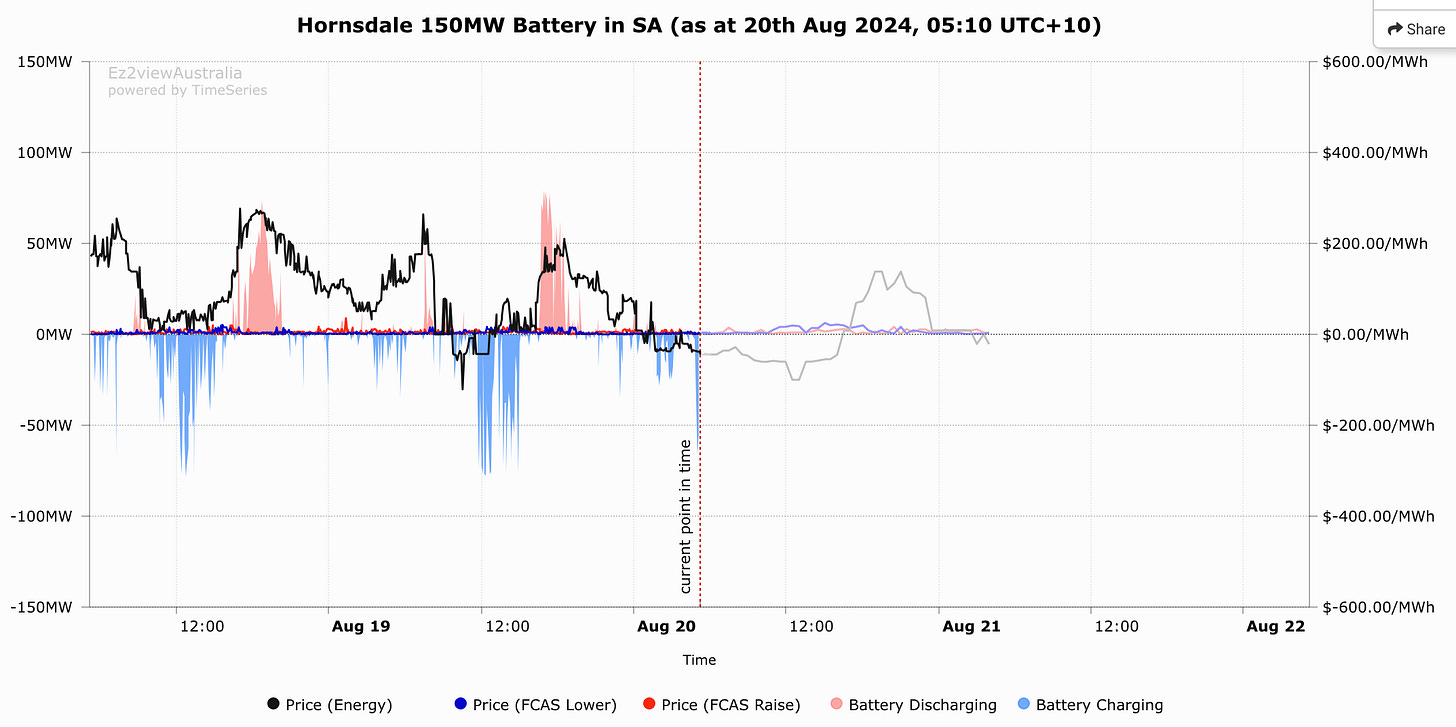Batteries: The Swiss Army Knife of the Grid
Batteries are playing multiple roles for utilities and grid operators, highlighting their versatility and importance to the energy transition
If you’re like me, you haven’t thought about a Swiss Army knife since you were a kid. Growing up in the Boy Scouts, the Swiss Army Knife seemingly had every component you could possibly need to survive in the wilderness. There was a lot of potential packed into one small tool that fits inside your pocket.
While I haven’t thought much about Swiss Army Knives in recent years, I’ve found that they serve as an excellent analogy for many of the current technological tools that we now enjoy. Smart phones, for example, can be thought of as a modern day Swiss Army knife, allowing users to send messages, access the internet, and use all kinds of apps that once required specific, dedicated technologies. (Worth reading Ben Thompson’s 2003 article on this topic.)
Another piece of technology that blends nicely with this analogy are modern day batteries. Given their prominence in the global energy transition, you’ve likely read about the rapid growth of the EV industry in the United States or the incredible drop in battery prices brought about by economies of scale.
Ostensibly, these batteries exist for one purpose - to store energy and then provide electricity to whatever device, building, or vehicle needs it. But, increasingly, batteries are being used for a variety of situations and purposes, helping utilities and ISOs/RTOs shave off peak demand, level out periods of grid instability, and trim around the rough edges of renewable generation to match rising electricity demand.
To better understand this analogy, let’s look at the functions batteries serve:
While batteries are “only” devices that can store and release energy, their size and portability coupled with the speed at which they can discharge has turned them into a Swiss Army knife of sorts for the grid. At the risk of overdoing the analogy, let’s take a look at the following ways that batteries are shifting how we use electricity:
The Nail File
Storing and discharging energy is great, but it’s even more effective when done at the right time. The process known as “peak shaving” lets utilities and grid operators store that energy and discharge it when electricity is most in demand - such as when everyone is running their air conditioners during a hot summer evening. The use of batteries in this instance obviates the need to run and maintain fossil-fuel peaker plants, which are often costly. Shaving off the peak of those highest demand hours can also reduce the need for additional generation and transmission infrastructure, thereby further reducing costs for utilities and ISOs.
The Emergency Blade
Similarly to how batteries can discharge to shave off those moments of peak demand, they can also be used in moments of emergency to prevent disaster. If a power plant unexpectedly goes down or there is an unscheduled outage, batteries can immediately be called into action to continue supplying the necessary power to the grid to maintain stability and service for customers.
The Screwdriver
The U.S. grid needs to be balanced at a specific frequency. Deviations in frequency indicate a gap between supply and demand - an issue that can quickly put the whole grid at risk. Batteries are being incorporated into Automatic Generation Control (AGC) technology where they are used by grid operators to regulate frequency. In some instances, battery owners are compensated for the ancillary services they provide to the grid, further incentivizing the uptake of batteries.
The Big Battery Down Under
Australia, with its large-scale deployments of solar and wind generation capacity, has become a global leader in battery storage technology. Appropriately dubbed “the Big Battery,” the Hornsdale Power Reserve has over 150 MW of storage capacity and provides critical peak shaving and frequency control benefits for consumers in South Australia. The Power Reserve is also co-located with the Hornsdale Wind Farm, ensuring that the electricity that charges the battery is produced by renewables. In its first two years of operation, owners claim it saved Australian ratepayers more than AUD$150 million.

Riding on the success and enthusiasm of the Hornsdale Battery, in May of this year the Australian government announced it was investing AUD$523.2 million in the Battery Breakthrough Initiative. With an aim at turning Australia into a center for battery design, development, and deployment, the initiative will look to combine battery research with the country’s ever-growing amount of deployed renewable energy capacity.
Golden Opportunities
No stranger to renewable energy and battery storage, California has nearly 55% of the United States’ currently installed battery storage capacity. It will unveil yet another “big battery” with the completion of the 680 MW Nova Power Bank which is scheduled to go into operation in 2025. Similarly to the Hornsdale plant, the Nova Power Bank will help shave off peak demand, reducing costs for customers as well as mitigating the need for additional peaker plants and transmission infrastructure.
Once completed, the Nova Power Bank will join other existing projects such as the 350 MW Crimson Energy Storage plant in Riverside County and the enormous 750 MW Moss Landing Energy Storate facility in Monterey County.
Key Takeaways
Batteries have become an indispensable part of the global energy transition. Their ability to mitigate the intermittency of renewable resources means that they will continue to be co-located with solar and wind farms, helping to store renewable electricity for discharge and use when it is most needed.
The materials that make up batteries (namely lithium, cobalt, nickel, graphite, and rare earths) are not evenly dispersed across the globe. Reliable access to these materials is already causing geopolitical tensions as countries seek to capture the economic and ecological benefits of mass battery production. Expect these tensions to continue as countries compete for resources, diversify their supply chains, and secure the resources they need to continue battery production.







